Apple iPhone 7 vs HTC 10
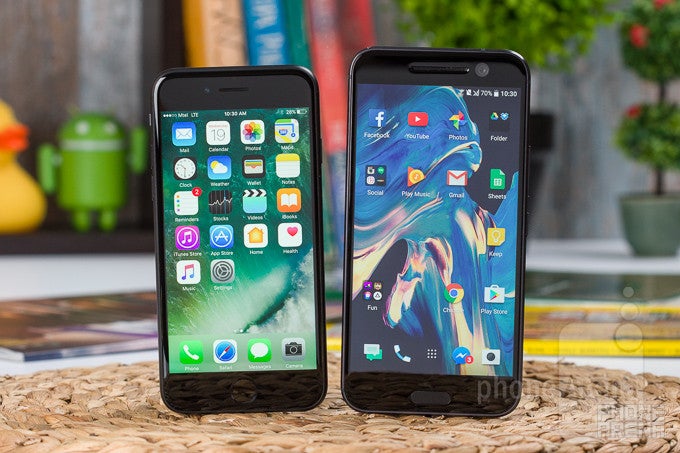
Introduction
Apple’s iPhone 7 is the one device that gets all the attention right before the busy Holiday season starts. No matter whether you prefer Android or are infatuated with Apple, the iPhone - the world’s best selling phone - will likely be at least something you consider before buying a new phone.
Then there's the financially troubled HTC. Financial trouble is bad for a company, but might be good for customers: for a device maker, it usually means that it pulls all stops to deliver a great new device. The HTC 10 is one such effort.
It’s only natural, then, to compare Apple’s latest iPhone 7 against the HTC 10. In fact, both companies share a common DNA with design playing a crucial role in their devices. Both phones are made of metal and have stylish appearance, but they do differ in terms of their platform and actual specs. Let’s see if there is one clear winner in this clash of flagships.
Design
Two solid metal phones and two refined designs, but the HTC 10 is a bit too heavy. The iPhone 7 also has water-protection that the 10 lacks.
For years on end, HTC has been known for bringing refined and stylish handsets on Android. In days when most phone makers made cheap-looking plastic phones, HTC stood tall with its sleek aluminum handsets. The HTC 10 is certainly one of that kin: a solid, well-put together device with an aluminum body and a characteristic trim on the back side giving it a more comfortable in-hand fit. The Apple iPhone 7 also feels somewhat similar with its monolithic metal construction: it’s the more compact of the two, though, and replaces the sharp edges for a slightly curved sides that add to its in-hand comfort.
The HTC 10 is surprisingly heavy for a 5.2-inch phone: it tips the scales at 161 grams, and that heft is felt, so if you’re looking for a lightweight handset, the HTC 10 is not it. The iPhone 7, in contrast, is much lighter: it weighs 138 grams.
For the first time on the iPhone 7, Apple uses a touch-sensitive area rather than a physically clickable home button. That’s another similarity with the HTC 10, which also uses a capacitive home key. However, feedback from the iPhone 7’s home button comes via Apple’s proprietary vibration motor, the ‘Taptic Engine’, and it mimics the feel of a real button quite successfully (but is not fully convincing). HTC’s button does not feature such tactile feedback. Both devices have fingerprint scanners built in the home key and on both we found them to be fast and accurate, but the one on the iPhone seems to have the more suitable round form and to get right reading a bit more often.
Apple is also upping the ante by adding water protection to its iPhone 7. The handset is IP67-certified for water- and dust-resistance, which is a great feat, but do keep in mind that Apple won’t cover water-related damage in its warranty. Nonetheless, we consider this a plus against the HTC 10 which completely lacks such water protection.
Display
The 4.7” iPhone 7 display is a bit on the small side, but it features outstanding colors and the support for the wider DCI-P3 color gamut. The 5.2” Quad HD display on the HTC 10 is super sharp and also looks good.
There is an obvious difference in screen size between the iPhone 7 and HTC 10: Apple’s device features a noticeably smaller, 4.7” LCD display with a resolution of 750 x 1334 pixels, while the HTC 10 has a mid-sized, 5.2” screen with a much higher, 1440 x 2560 pixel resolution.
Yes, the HTC 10 is the one that has the much sharper display on paper: it has pixel density of 565 pixels per inch (ppi) of screen space, while the iPhone has 326ppi, but in real life that difference is hardly even noticeable. The places where you do see it the most is when reading text and looking at it from very up close, but it’s a very subtle difference and in most places both screens will appear equally sharp to the average user.
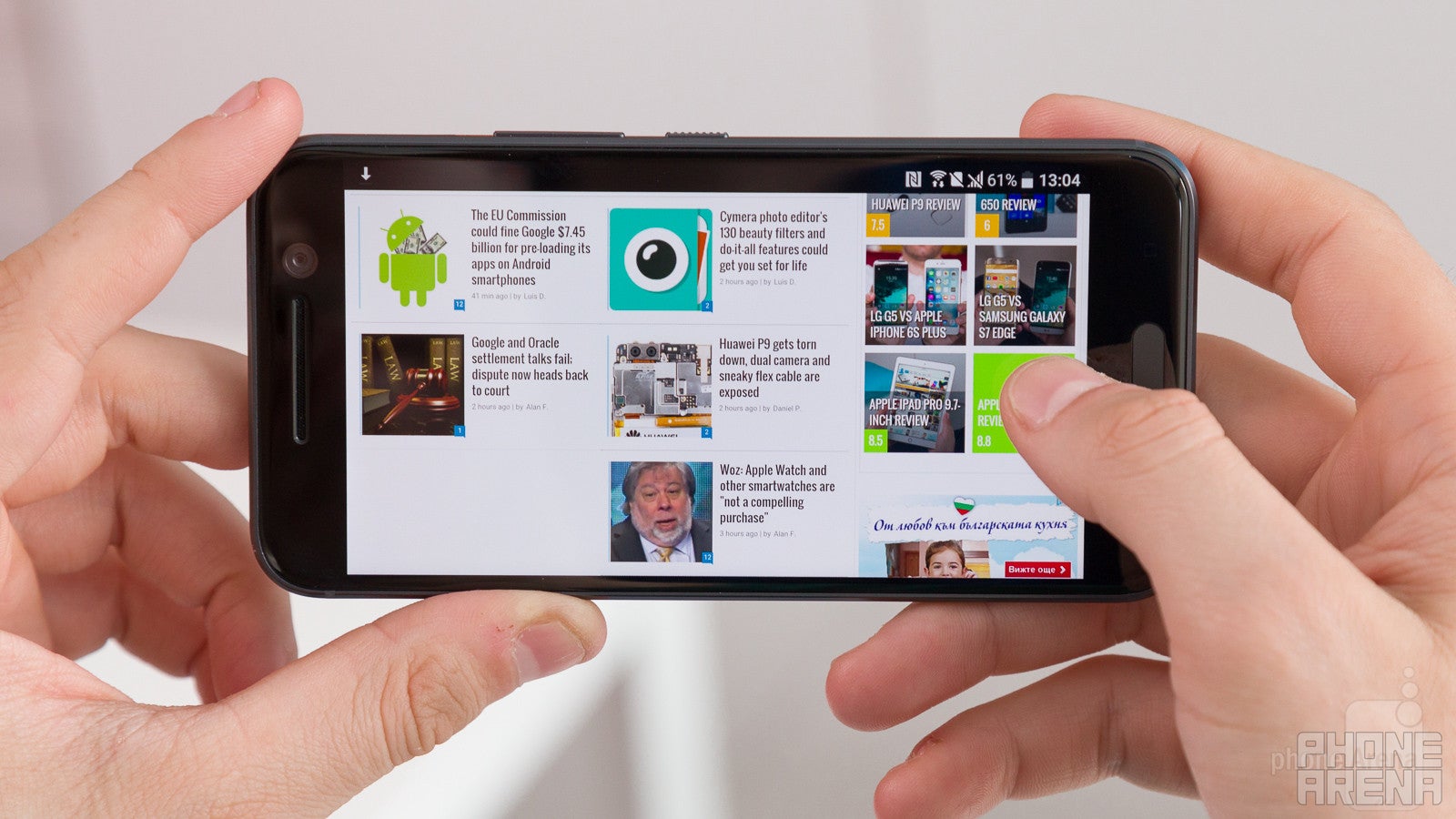
HTC 10 is the one that has the much sharper display on paper
When it comes to color, these are two of the finest displays out there. Certainly, two of the finest LCD displays. Not having AMOLED on either of these two means blacks do appear slightly grayish rather than perfectly black, but for all else the displays are excellent. The iPhone 7 is the first phone to support the DCI-P3 color space with native color management, meaning that the phone is able to show the wider, richer colors of DCI-P3 when they are there, but also fall back to sRGB when it needs to show sRGB content.
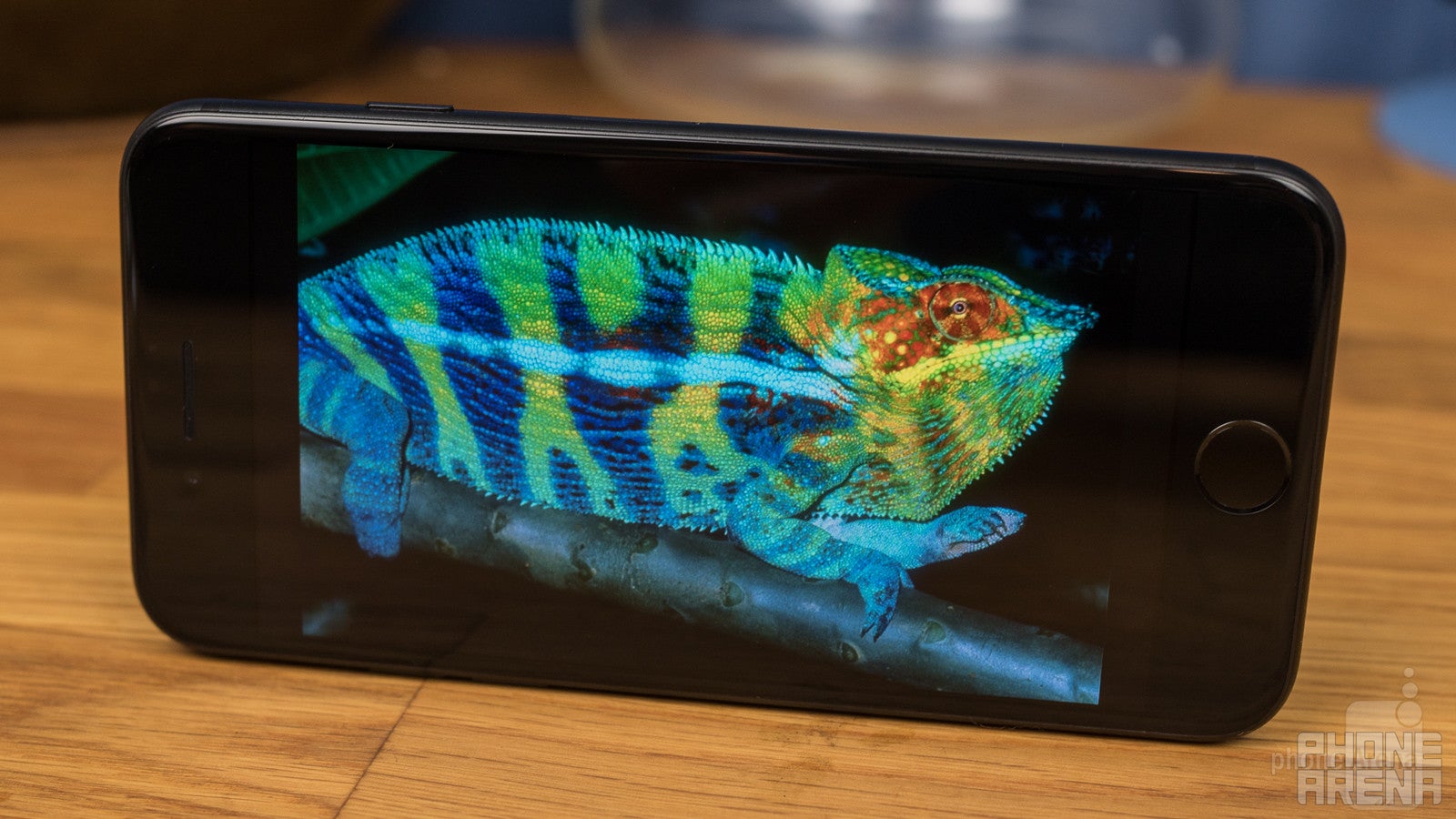
The iPhone 7 is the first phone to support the DCI-P3 color space
The HTC 10, on the other hand, lacks such fancy color management (no Android phone so far supports native color management), but does adhere to the sRGB color standard that is currently the de-facto caliber used for the majority of media. It is not perfectly balanced: it features slightly colder, bluish colors, but those are fairly minor complaints.
In terms of brightness, the HTC 10 reaches a peak of 432 nits which is below average and makes reading the display outdoors a bit of a challenge. The iPhone 7, in contrast, achieves an impressive 632-nit maximum brightness, and it is easy to read its screen even on a sunny day outdoors. Night owls won’t be happy with the minimum brightness level on the HTC 10: if you use your phone at night, you want brightness to go as low as possible in order to avoid eye fatigue, and the HTC 10 only goes down to 7 nits, which is still too bright. The iPhone 7 not only has the useful Night Shift option, but also reaches a minimum brightness of only 2 nits.
Interface and features
Apple continually improves the iOS experience: iOS 10 feels more intuitive, features enhanced 3D Touch support and iMessage becomes more powerful. HTC’s custom Android skin is fast and support themes, but lacks any remarkable special features.

The HTC 10 is an Android phone, while the iPhone 7 runs Apple’s iOS, and this alone means there are significant differences in the user experience.
Apple’s ecosystem is known for being the ‘closed’ one, with less customization options, more limited access to the system, but that is also the beauty of iOS: this way Apple is able to keep the platform more secure, prevent app piracy, and enjoy a more vibrant app and games ecosystem.
The HTC 10’s Android 6.0 Marshmallow, on the other hand, comes with a ton of fun customization options: custom themes allow you to overhaul the looks of your phone easily, set custom default apps for pretty much everything out there, and have that absolutely seamless integration with Google services. However, in places, it still seems like HTC retains some menus that looks puzzling and far from intuitive: the Personalize menu that you access by long-holding an empty space on the home screen is one such place, a long list of options that seem excessive and not as visually appealing as on other Android phones.
Still, at the level most users care about, we would say that functionally both Android and iOS are on par. All the major apps are available on both platforms and you are not likely to miss any major feature on either phone.
However, there are some nice extras that the iPhone brings to the table that HTC 10 cannot match: first, there is 3D Touch that adds a few neat shortcuts to the iOS experience; also, some core apps like iMessage have been redone with stickers and a ton of options that make it one of the most convincing daily things that keeps people glued to their iPhones.
Performance, Processor and Memory
While both phones work fast in the daily grind, the Apple A10 Fusion chip shines in benchmarks and games, while the Snapdragon 820 on the HTC 10 can’t quite keep up.
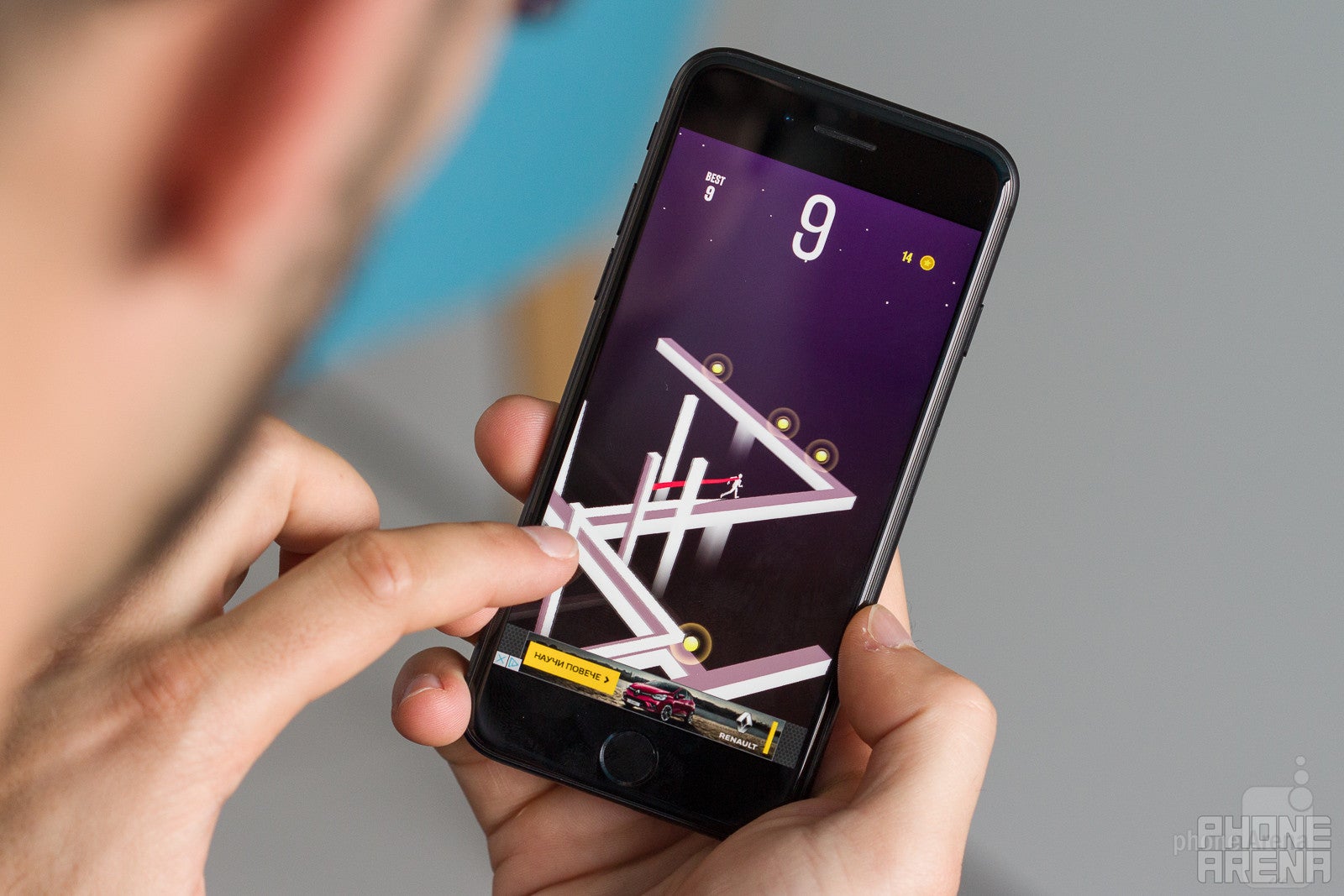
Ever since Apple started developing its own custom chips with the Apple A6 found in the iPhone 5, the company has gained an important advantage. It’s now been four years since that initial effort, and Apple has pulled ahead with the Apple A10 Fusion system chip in the iPhone 7 that uses two large performance cores in concert with two smaller, battery-optimized ones. On the other hand, most Android phone makers, including HTC with the 10, use the Snapdragon 820 system chip for flagships in 2016.
There are a few things that characterize the performance experience on these two phones. On the iPhone 7 it’s all a very smooth affair with buttery animations and a fluid experience, while on the HTC 10 it’s brusque, with zero animations, but it’s also fast. For daily tasks, both phones would be sufficiently fast and lag-free for users to be satisfied by the experience.
Yet, when it comes to gamers and those who run more demanding applications, the iPhone is a clear winner. Its physically larger CPU cores are able to deliver much more power in single-core processing, meaning faster performance, something that shows with faster loading times for apps and when performing all sorts of complex operations.
When it comes to internal storage, Apple sells a 32GB, 128GB and 256GB versions of its iPhone 7, and there is no option to expand that storage. HTC, on the other hand, offers the HTC 10 in a 32GB mainstream version, which comes with a microSD card slot that makes it easy to bring in more storage for those who need it.
Camera
Two excellent cameras: Apple’s iPhone captures more vibrant, eye-popping color, while HTC’s 10 goes for slightly more muted, but also more realistic colors.
Phones these days replace cameras for a great number of people, so it’s no surprise that camera requirements have only grown taller.

Let’s preface this by revealing a well-known secret: the iPhone 7 and HTC 10 are two of the best camera phones you can get these days. Specs alone don’t tell much, but it’s important to know the basics: the iPhone 7 ships with a 12-megapixel rear camera with a size of 1/3 inches and a wider-than-before, f/1.8 lens, while the HTC 10 has a larger, 1/2.3-inch sensor that also captures images in 12MP resolution using an f/1.8 lens. Both cameras also have an optical image stabilization (OIS) unit that helps stabilize the camera in low light and also helps with the stability of video.
The camera app on the iPhone 7 is no surprise: Apple has been adding function after function with every new iPhone, but its camera app remains delightfully simple and devoid of complexity. There are no manual settings, but there are third-party apps for that and chances are the majority of people don’t need them, so this is a smart decision by Apple rather than a sore omission. HTC, on the other hand, features a somewhat complicated and a bit more confusing app that takes a bit of practice to get used to. The side-pulled menu that allows you to change between modes is not the most intuitive one out there, but in the main interface you do get some useful features like an instantly accessible video recording button alongside the photo capture, as well as a pause button for your videos (not available on the iPhone).

Let’s cut to the chase, though: image quality. Both the iPhone 7 and HTC 10 do an excellent job. While some popular phones like recent Samsungs go overly aggressive with sharpening resulting in somewhat weird-looking shots, both the iPhone 7 and HTC 10 manage to capture very well-balanced pictures that have great dynamics, excellent color and adequate sharpness.
The big improvements for the iPhone come in low light photography as the faster, f/1.8 lens lets more light in and allows for shots that were not possible on earlier iPhones. The HTC 10 does comparably well in low light situations.
The iPhone also has the Live Photos option that captures a moment before and after the image, and animates your otherwise still photograph memories. The HTC 10, on the other hand, has a Zoe capture option that does somewhat similar, but requires fiddling in the menus to enable it and results in two files, a separate video and image file, rather than one file as inside the iPhone camera roll.
Up front, we have a new and higher-res 7-megapixel camera on the iPhone 7, while the HTC 10 is the first mainstream phone to have a front camera with optical image stabilization (OIS), in its case on a 5-megapixel sensor. Both phones also use their phones that fire up at maximum brightness as a kind of a flash alternative in low light, but we found the iPhone producing more light. As to regular conditions, both phones capture good-looking selfies, the iPhone with slightly more saturated colors, but the HTC seems to be able to capture more light and do slightly better in low-light conditions.
In terms of video quality, both phones are capable of recording 4K video at 30 frames per second. The iPhone 7, however, boasts the clearly superior video stabilization via both electronic and optical ways, and it is also very quick with auto focusing. The HTC 10, on the other hand, also does well, but is just a bit less stable and has a bit more trouble with focusing than the iPhone.
Multimedia and sound quality
Sound has traditionally been HTC’s home turf: it has been equipping its flagships with dual front speakers for years on end, but just in the year when HTC skips on that trend, we see Apple’s iPhone strengthen up its sound output via a dual speaker system of its own.
So yes, both phones have dual speakers, but neither of the two has both of them firing at the front: instead, both rely on a system with a single bottom-firing speaker, and another one that covers the high tones located in the earpiece. Both produce fairly loud and high-quality sound.
The elephant in the room concerning audio is without a doubt the lack of a 3.5mm headset jack on the iPhone 7. It’s an omission that will affect many: those who already have a set of good 3.5mm headphones, those who plug in their phone to the AUX port on their car, or those who play to their home sound system directly via a phone. The HTC 10, on the other hand, has that regular 3.5mm jack, so it does not need to deal with all those painful consequences.
Call quality
We have no major has complaints about call quality on either phone: both sound sufficiently clear and loud to be able to carry out conversations with ease.
However, if we had to pick the nits, we’d point out that the earpiece on the HTC 10 produced slight occasional cracking sound artifacts, sounding as if the caller has a sore throat. The iPhone does sound slightly clearer on both ends, but the difference is really not all that significant.
Battery life
The iPhone 7 lasts a bit longer than the HTC 10, but it lacks any form of fast charging, while the HTC does support Quick Charge 3.
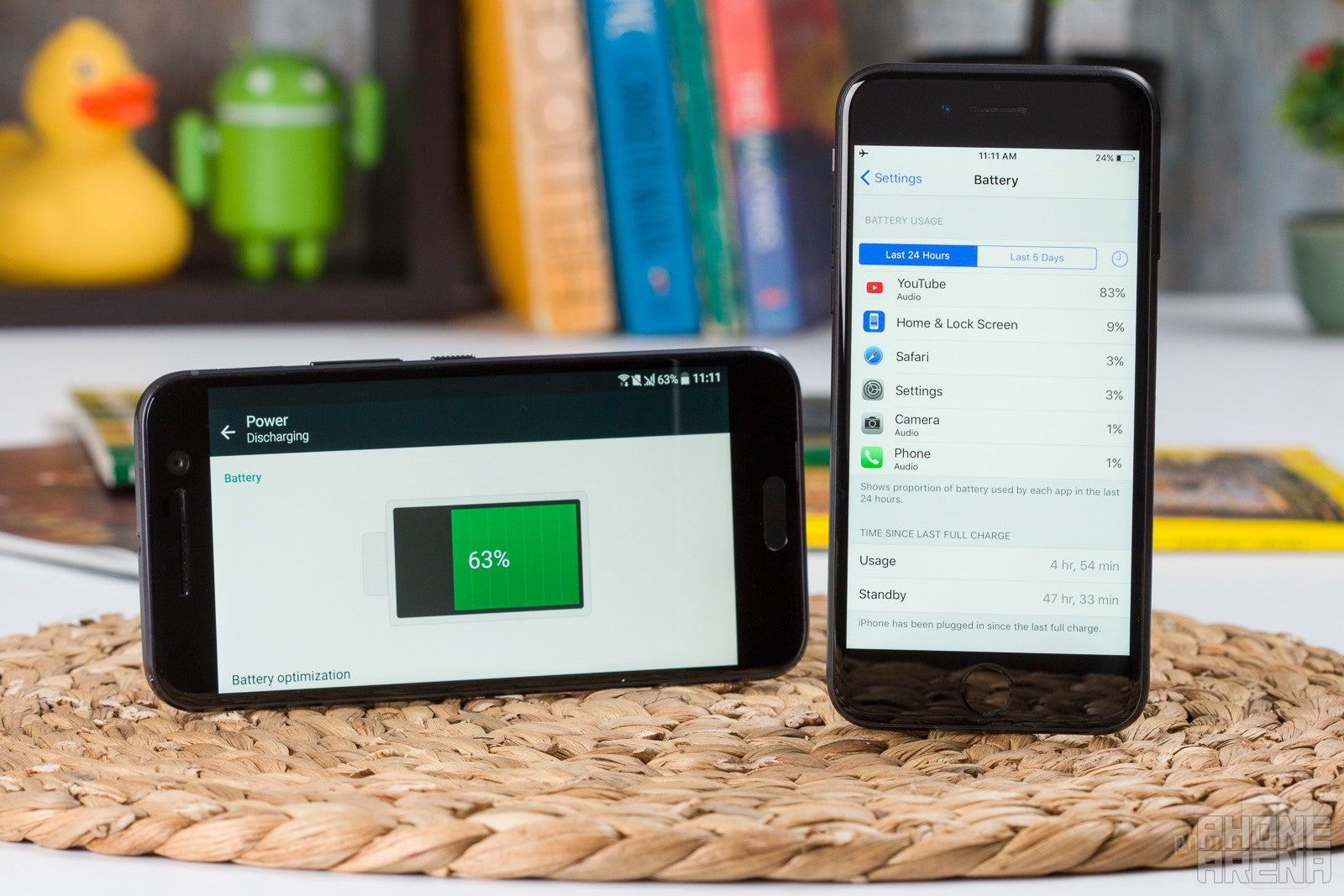
Apple’s iPhone is able to squeeze some seriously impressive battery life out of the smallish for Android standards size of its battery, but how does the iPhone 7 compare against the HTC 10? The iPhone 7 features a 1960mAh battery, larger than before as Apple has freed some space with the removal of the 3.5mm headset jack. The HTC 10, on the other hand, sports a vastly larger, 3,000mAh battery.
In our custom battery test, the iPhone outlasted the HTC by a small margin: the on-screen battery life score of the iPhone 7 stood at 7 hours and 46 minutes, while the HTC 10 scores 7 hours and 10 minutes.
In real-life use, you will get through a day even with more intense use on both phones, even day and a half with moderate usage, but we’re not yet in two-day battery life territory here, so overnight charging is likely a must.
Speaking of overnight charges, the HTC 10 features a Qualcomm Quick Charge 3.0-compliant, 2.5A charger. The phone recharges fully in 1 hour and 40 minutes, while the iPhone 7 lacks such fast-charging capability a much longer 2 hours and 21 minutes to fully charge.
Conclusion
At the end of the day, the Apple iPhone 7 and HTC 10 are two great choices for those looking for a stylish phone that is also fast and has a good camera.
On these fronts, both phones deliver.
There are some important nuances, though: the iPhone 7 with its iOS 10 platform runs smoother and has a superior selection of games and even some apps, it also boasts slightly longer battery life, and the water-resistance comes as a very nice bonus feature.
The HTC 10 is not a slow phone by any means, but its performance seems a bit janky, lacking the smooth animations and calm appeal of iOS, it is a bit on the heavy side, and it cannot stand its ground in a direct benchmark and gaming comparison. Its interface also feels weird in certain places and it lacks that nice water-protection feature, but it does have quick charging that the iPhone lacks.
Then, there’s the 3.5mm headset jack: put shortly, if you use it currently, you will miss not having it on the iPhone. Not everyone does, though, and the built-in adapter alleviates some of the pain of the missing jack.
Putting the two phones on a scale, the advantages of an iPhone seems to weigh things in its favor, but if you like clean Android skins, the HTC 10 will not disappoint either.
Apple iPhone 7
Pros
- Great-looking display
- Water resistance is a nice extra
- Faster than any other phone on the market
- Improved main camera with great stabilization
- Rich ecosystem
- Very good battery life
HTC 10
Pros
- Stylish metal design
- Clean and generally fast Android build
- Well-performing camera
- Quick Charge support
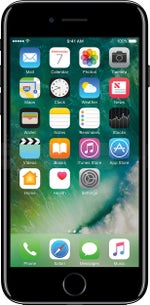
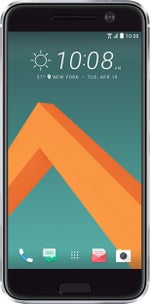

























Things that are NOT allowed: